In Japan's '80s PC magazines, games were included as sound on cheap vinyl 'albums'
A quick tour through some of Japan's coolest retro PC mags.
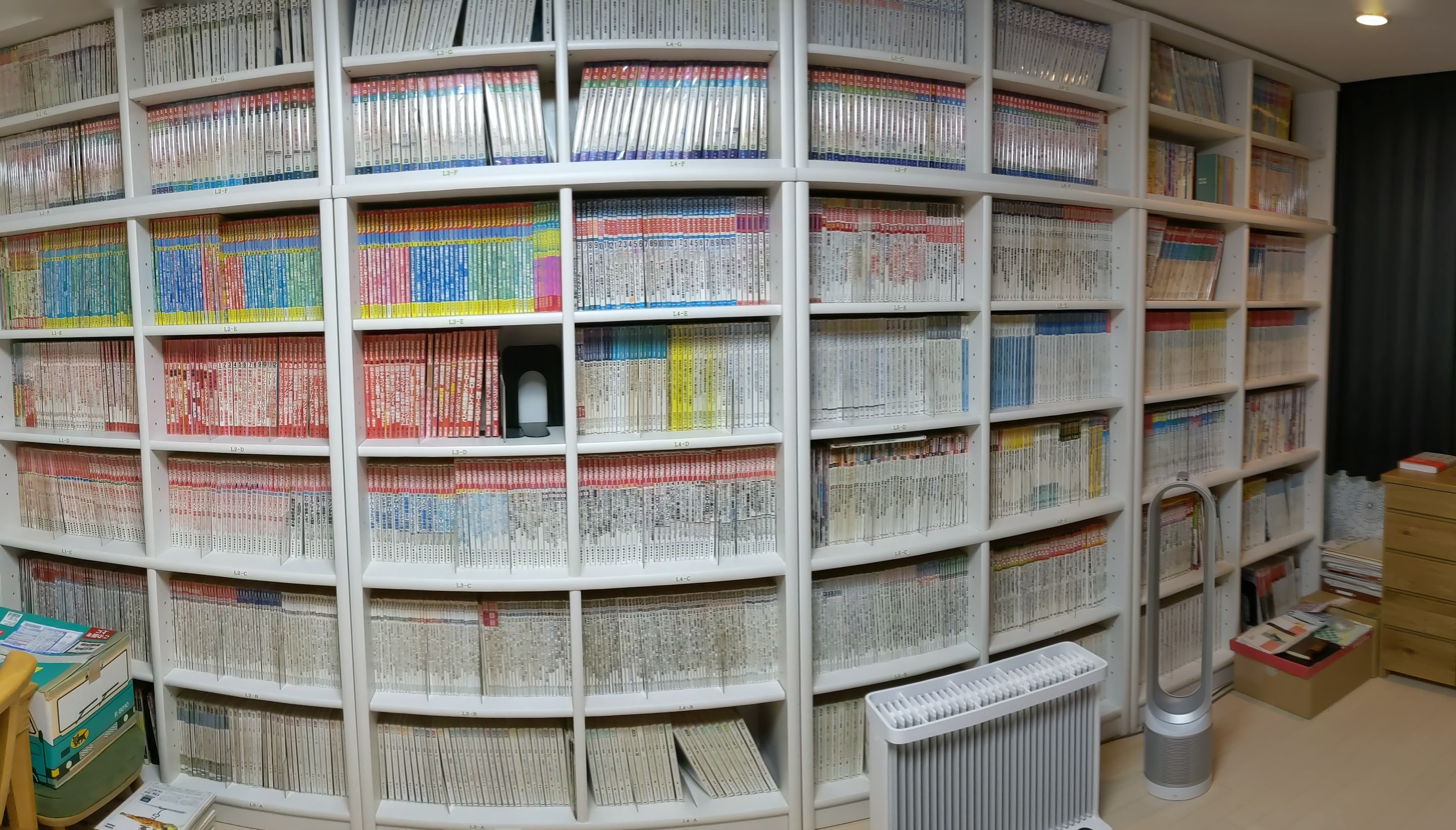
Japanese technology catapulted the entire country into an economic boom in the 1980s, and its PC scene was right at the center of it. Unlike the NES or the Walkman, Japanese PCs were never huge internationally, which is why there are so many largely unknown but fascinating Japanese PC games from the '80s and '90s that now need to be preserved before they're lost forever. The same goes for Japan's PC magazines—as the PC exploded in popularity, there was an enthusiast magazine for pretty much any niche you could imagine. Joseph Redon, who founded the Game Preservation Society, has copies of most of them.
"There are many, many different magazines. Too much, I would say. Almost one magazine for each system," Redon told me as he showed off a wall of packed floor-to-ceiling bookshelves, which hold only a small part of what the Game Preservation Society has in storage. "In the organization we have a game book collector who has 24,000 books. He also has magazines. So, I think books and magazines, something around 28,000."
Even if you can't read any of them, they're fascinating to look at. Their covers are wild, often illustrations or bizarre graphic design rather than photos. And because they're from the heyday of print, most of the mags tend to be hundreds of pages. We talked through many of them.
There's Beep, which called itself a "magazine for game kids." It covered Famicom, PC, arcade, everything. Computik was all about PC games. Technopolis started as PC mag before slowly transitioning to covering doujin material and softcore adult games. IO was a programming and hardware magazine that was especially lengthy, because dozens upon dozens of pages would be filled with code.
Popcom was a PC magazine Redon called "very colorful" because it was for a more casual audience, with references to movies and culture in general. "It's not for otaku," he smiles. "I like Popcom very much." Login was a similar magazine from game publisher ASCII.
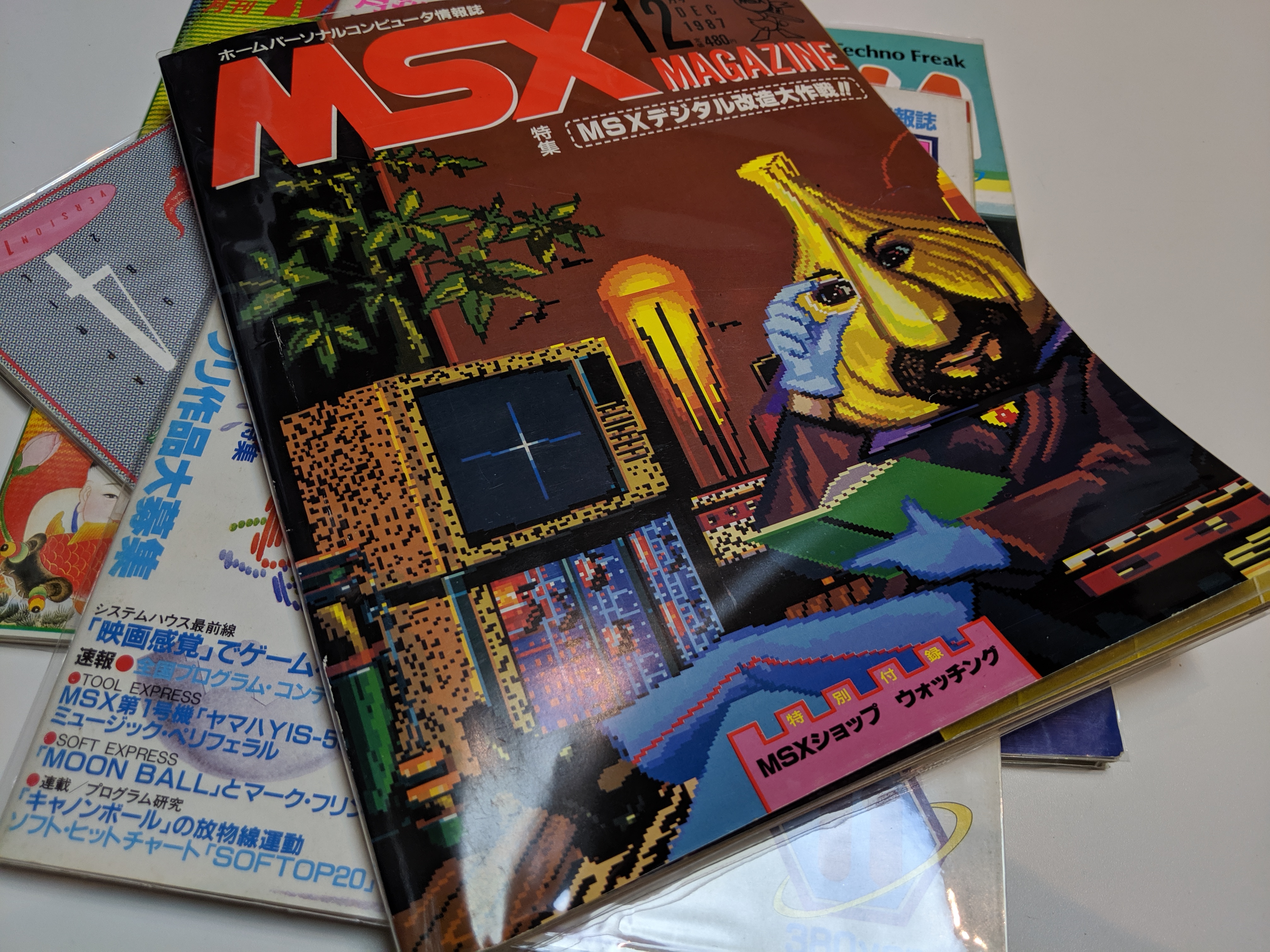
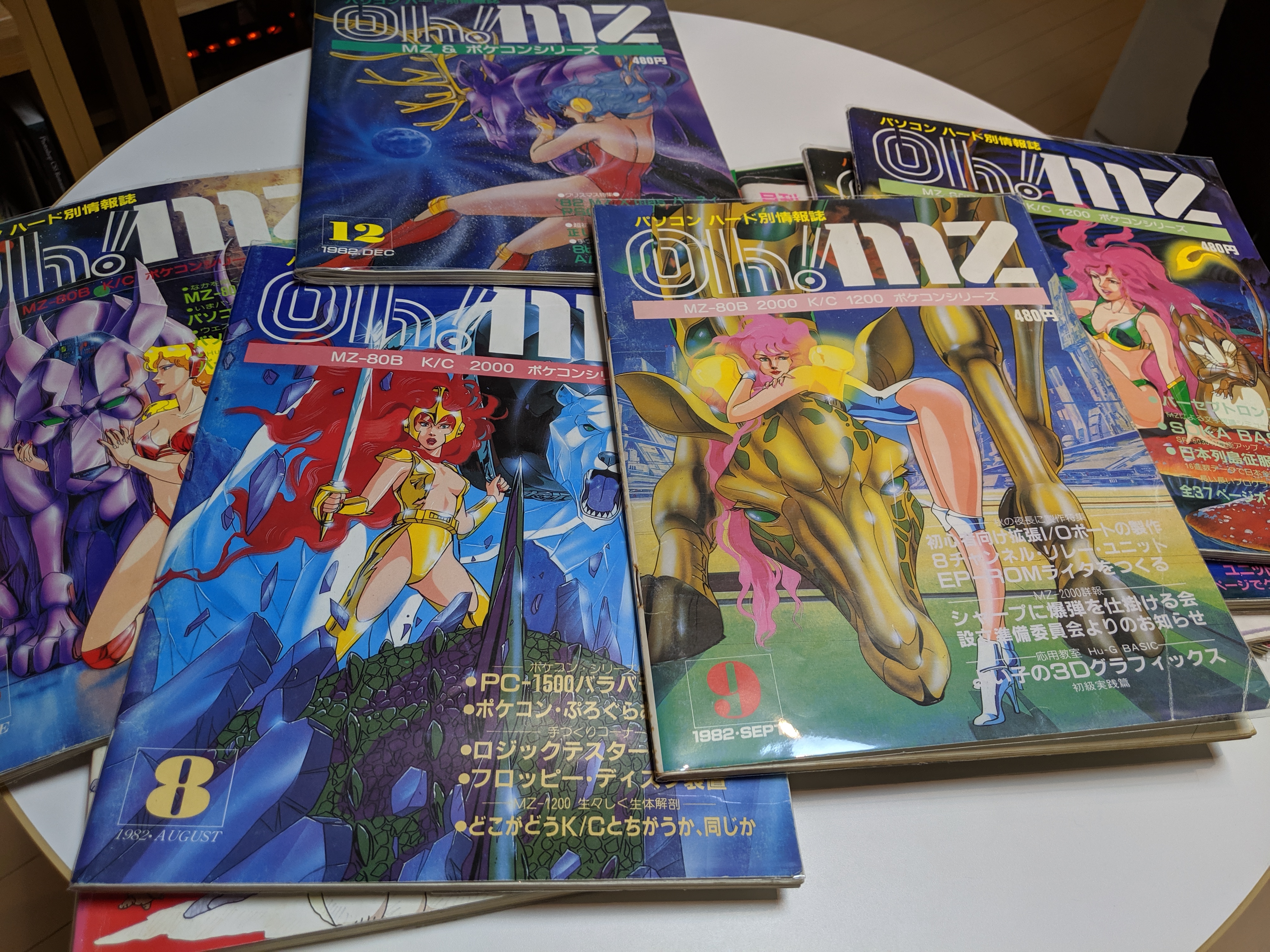
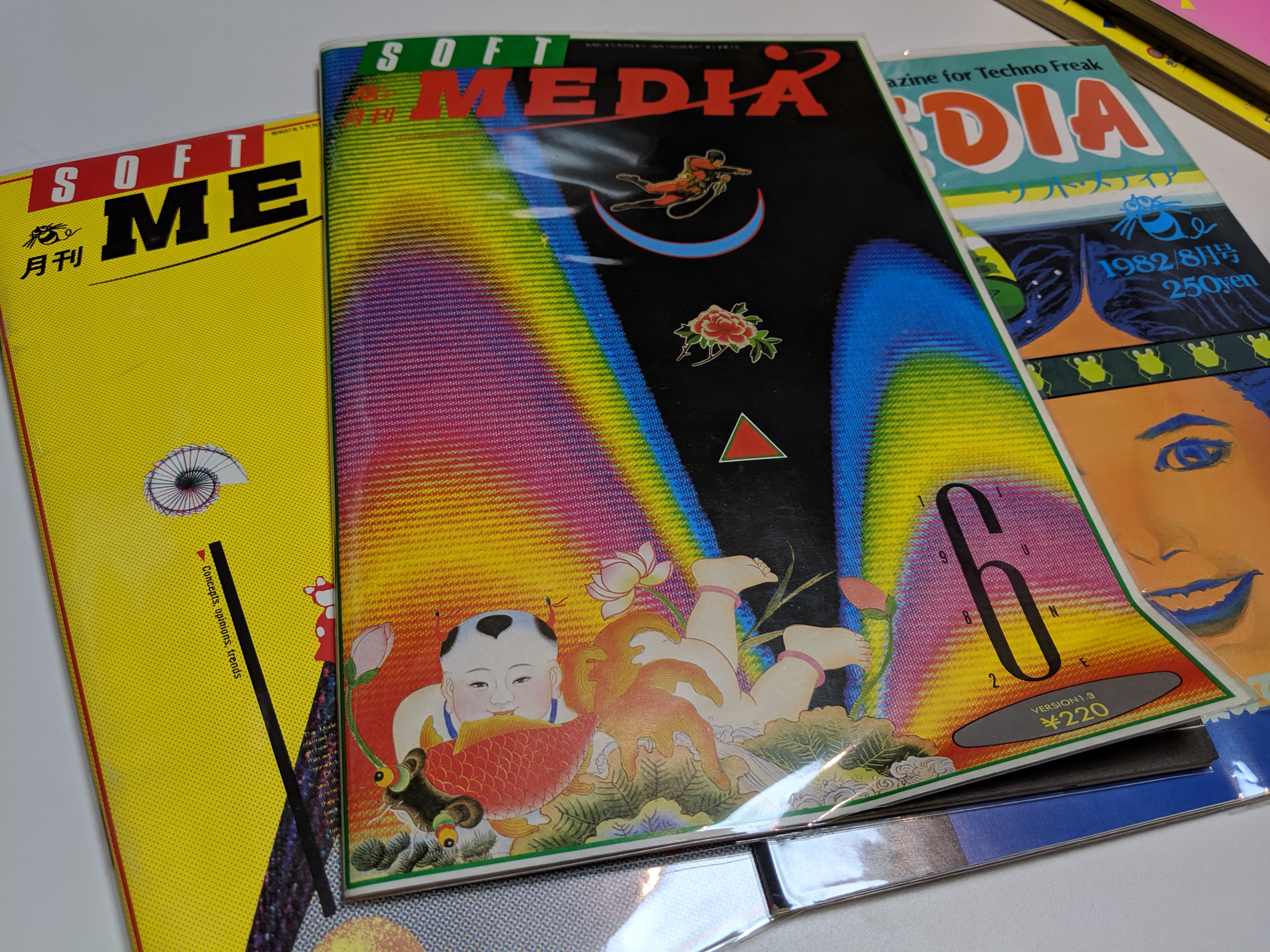
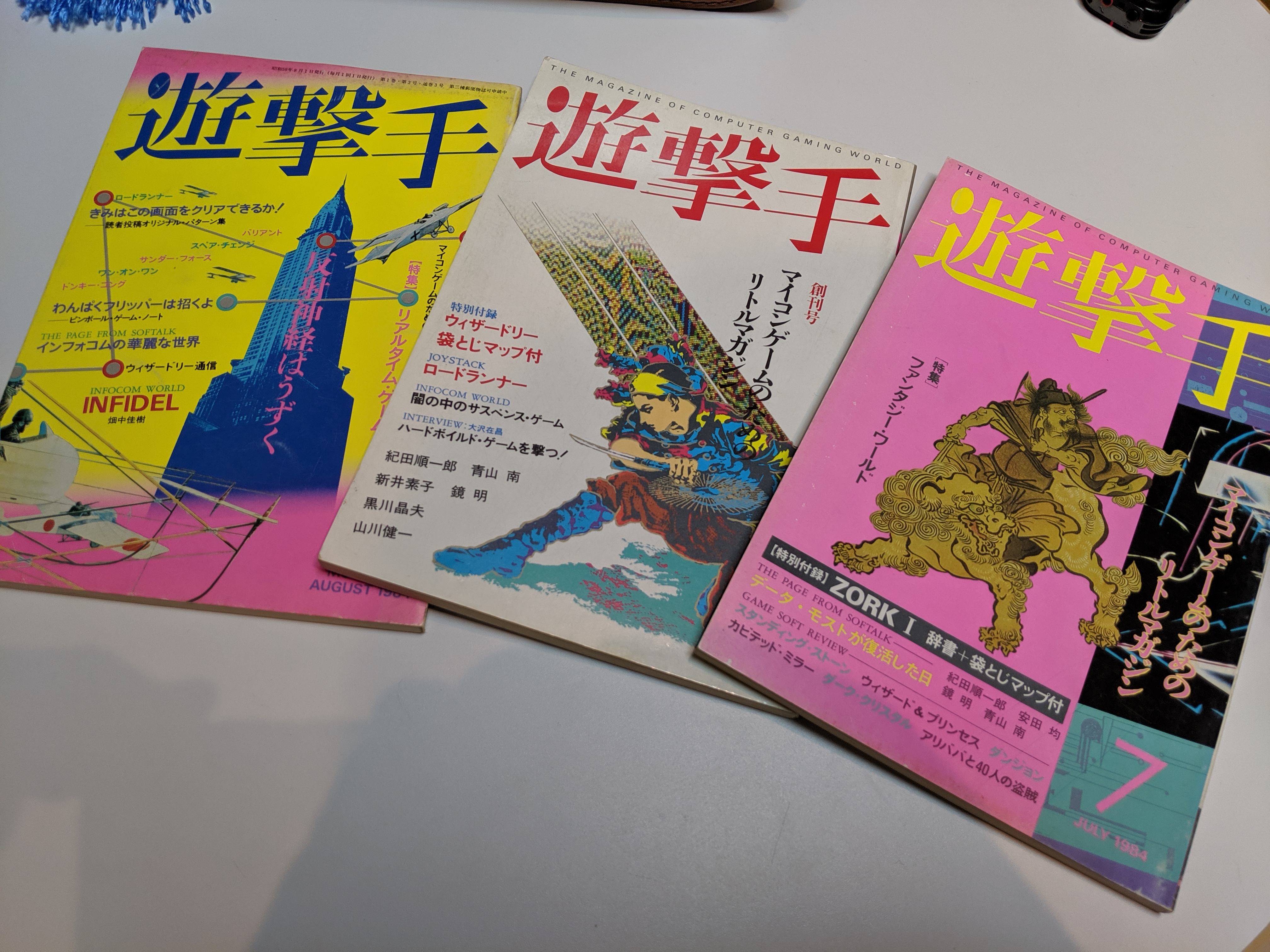
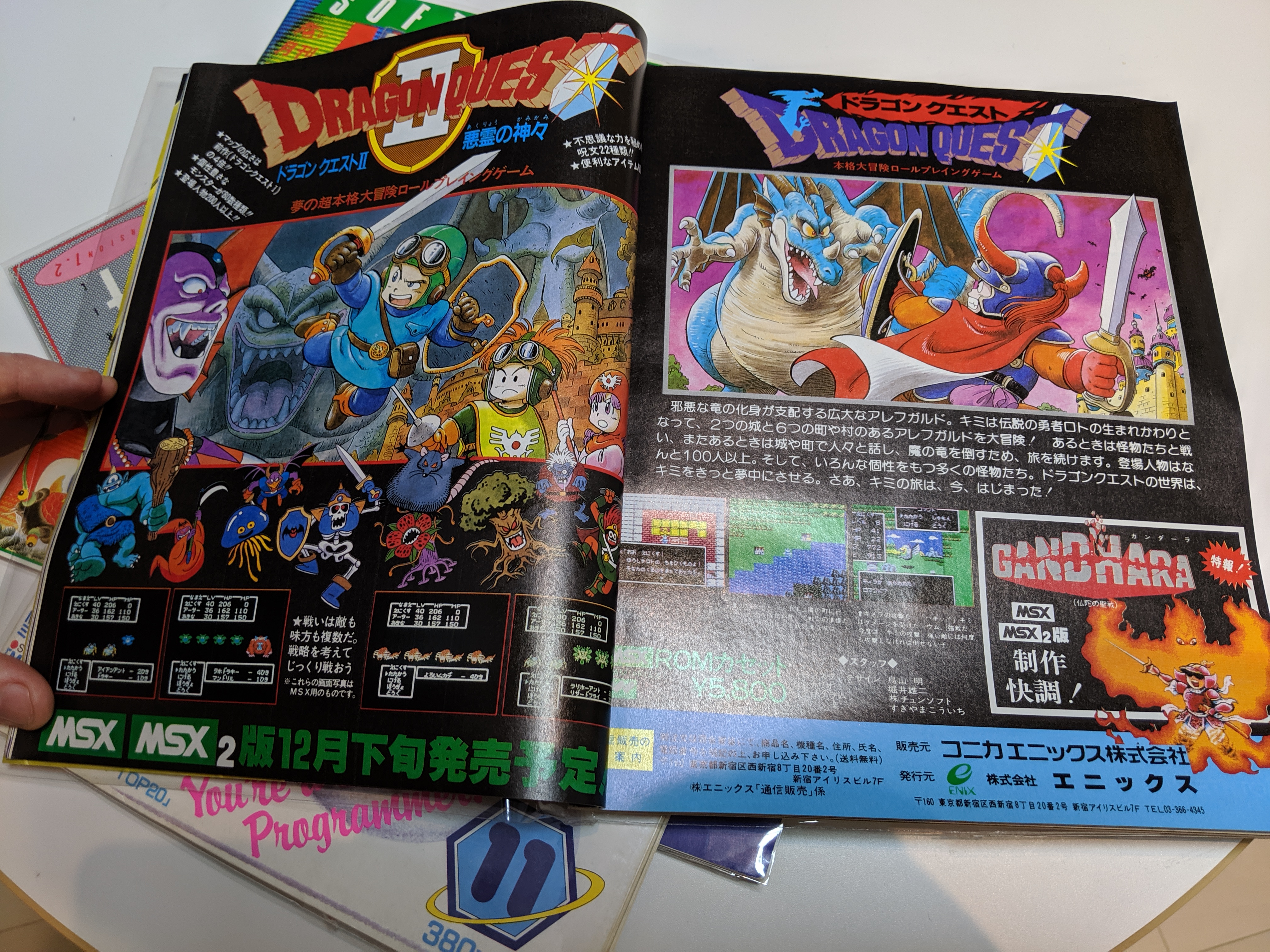
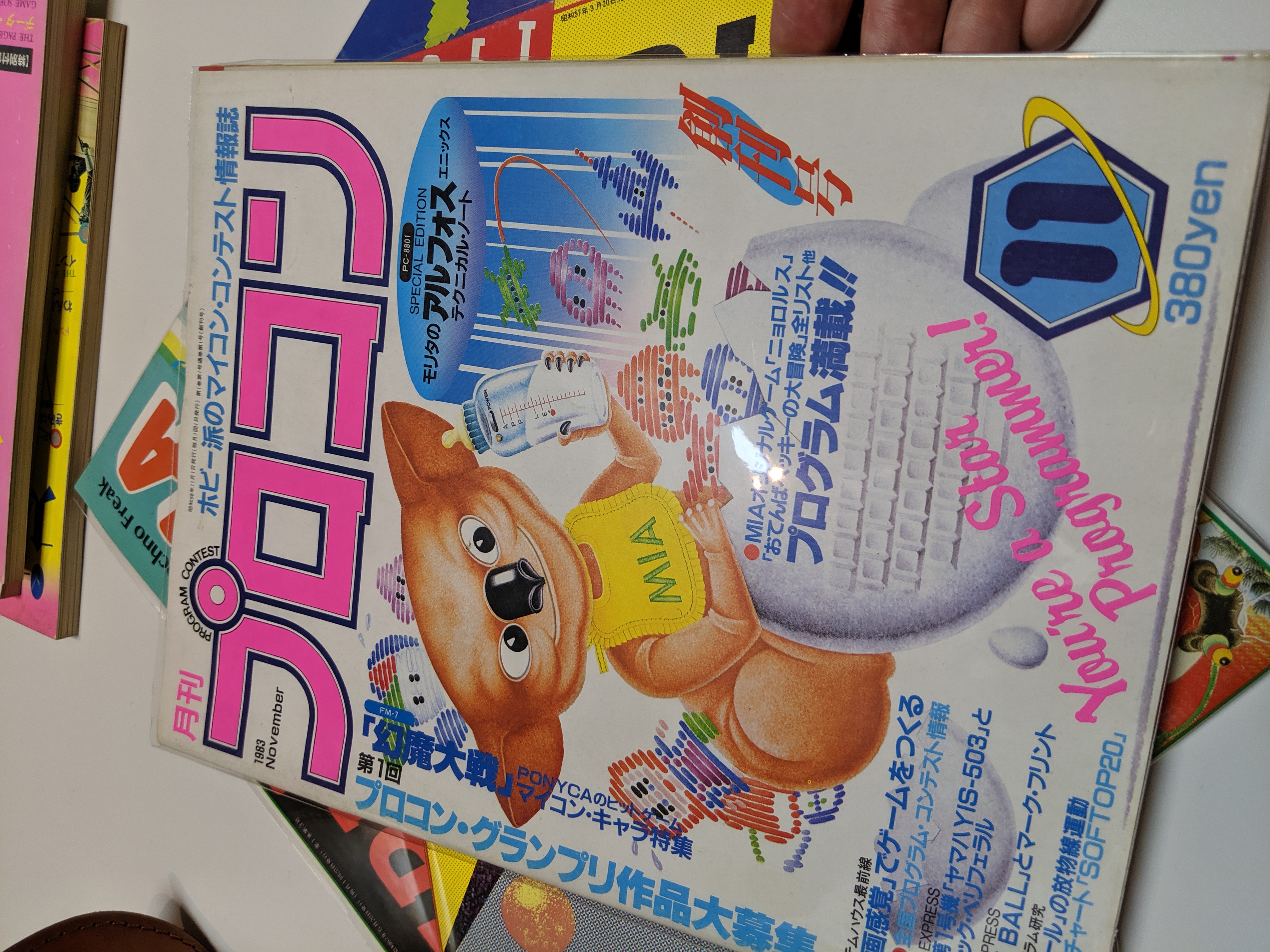
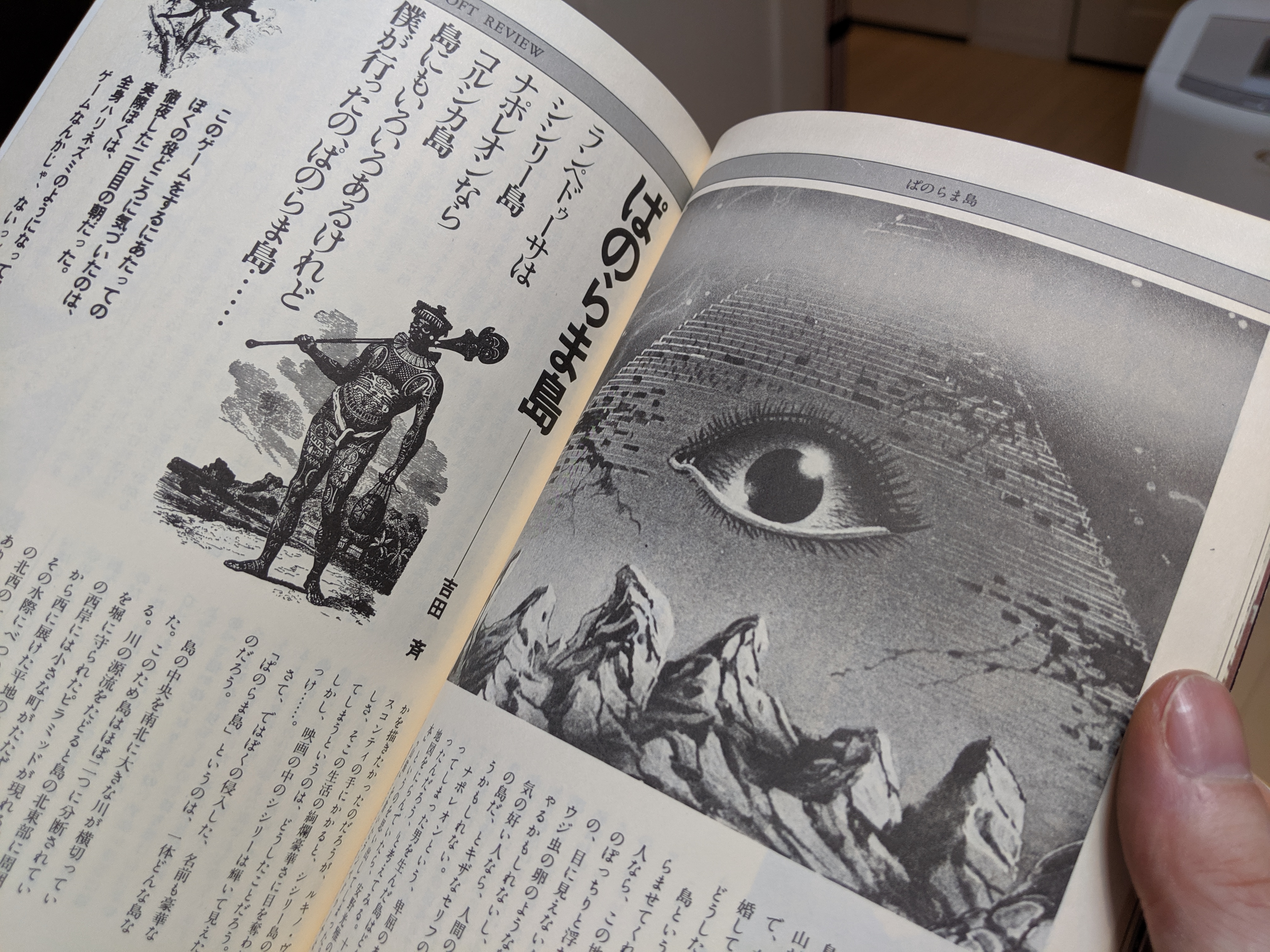
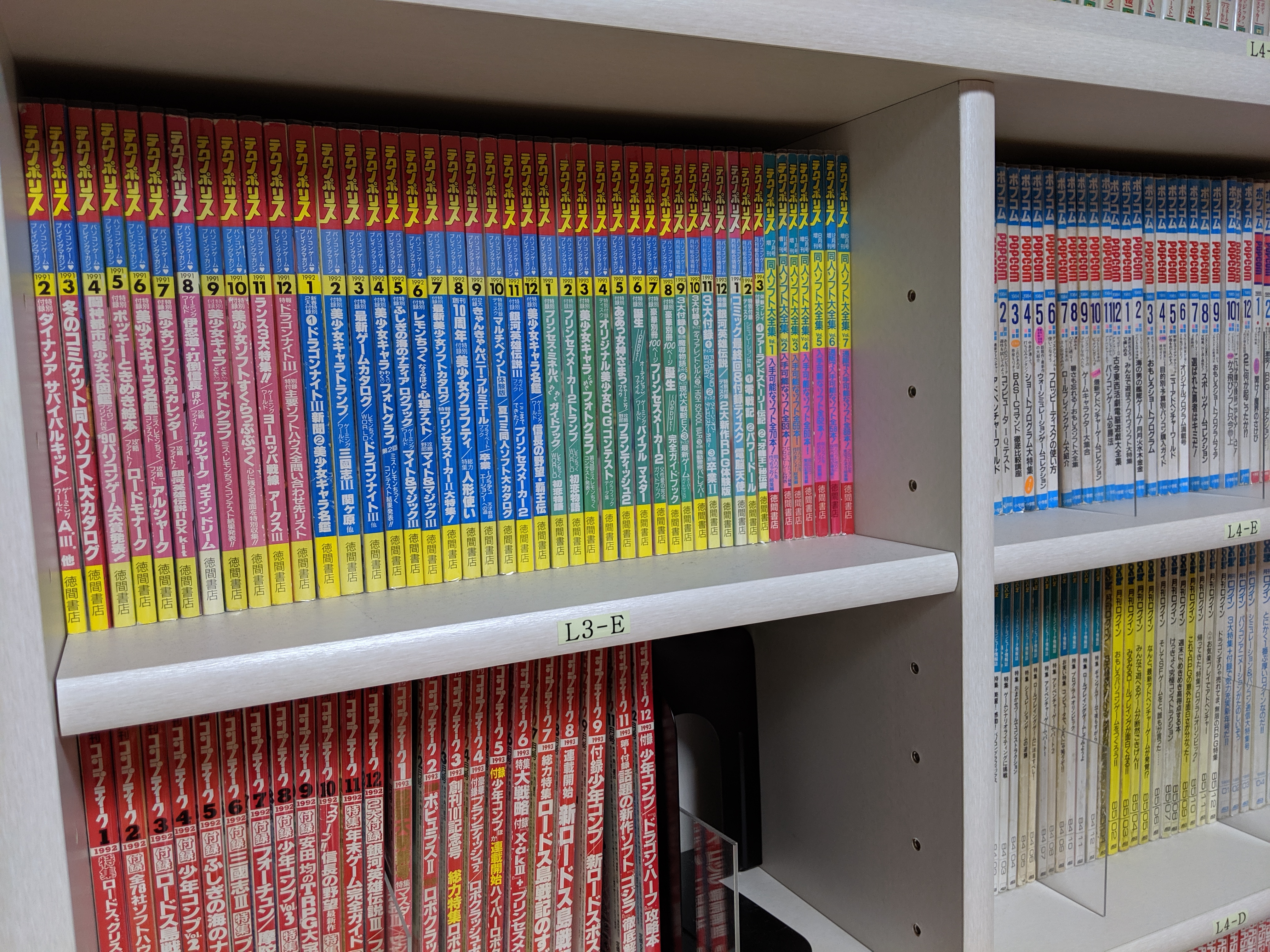
Publisher SoftBank released a magazine for every system, ranging from the FM Towns to the NEC line of PCs, like the popular PC-88. And of course there was MSX Magazine, completely focused on MSX systems. Oh! MZ, a mag focused on the Sharp MZ computers, had "the most beautiful covers," Redon said.
Redon has the whole run of another mag, SoftBank, published by game company Hudson, which is hard to find; it was never widely sold, and was mainly distributed in northern Japan, where Hudson was based. And the most successful of the bunch was BASIC, named after the programming language, which covered all things computing.
The biggest gaming news, reviews and hardware deals
Keep up to date with the most important stories and the best deals, as picked by the PC Gamer team.
You can find scattershot scans of many of these magazines on the Internet Archive.
To me, probably the most interesting of all of them is PIO, a game-focused spin-off of that programming mag IO. There are others I'd definitely prefer to flip through for screenshots of old games and great artwork, but PIO really showcases how much technology has changed since the early days of PCs. Today it's hard to imagine learning to program by typing in code that's printed in a magazine, copying thousands of line by hand, and then running it, desperately hoping you never made a typo. Imagine a hundred pages of a magazine in 2019 being devoted to code!
Some issues of PIO, though, came with a better way to get a game into your PC. Redon called it a Sonosheet, though it's also known as a flexi-disc. It's a cheap, super thin vinyl record you'd play in a turntable, with the computer code stored as sound.
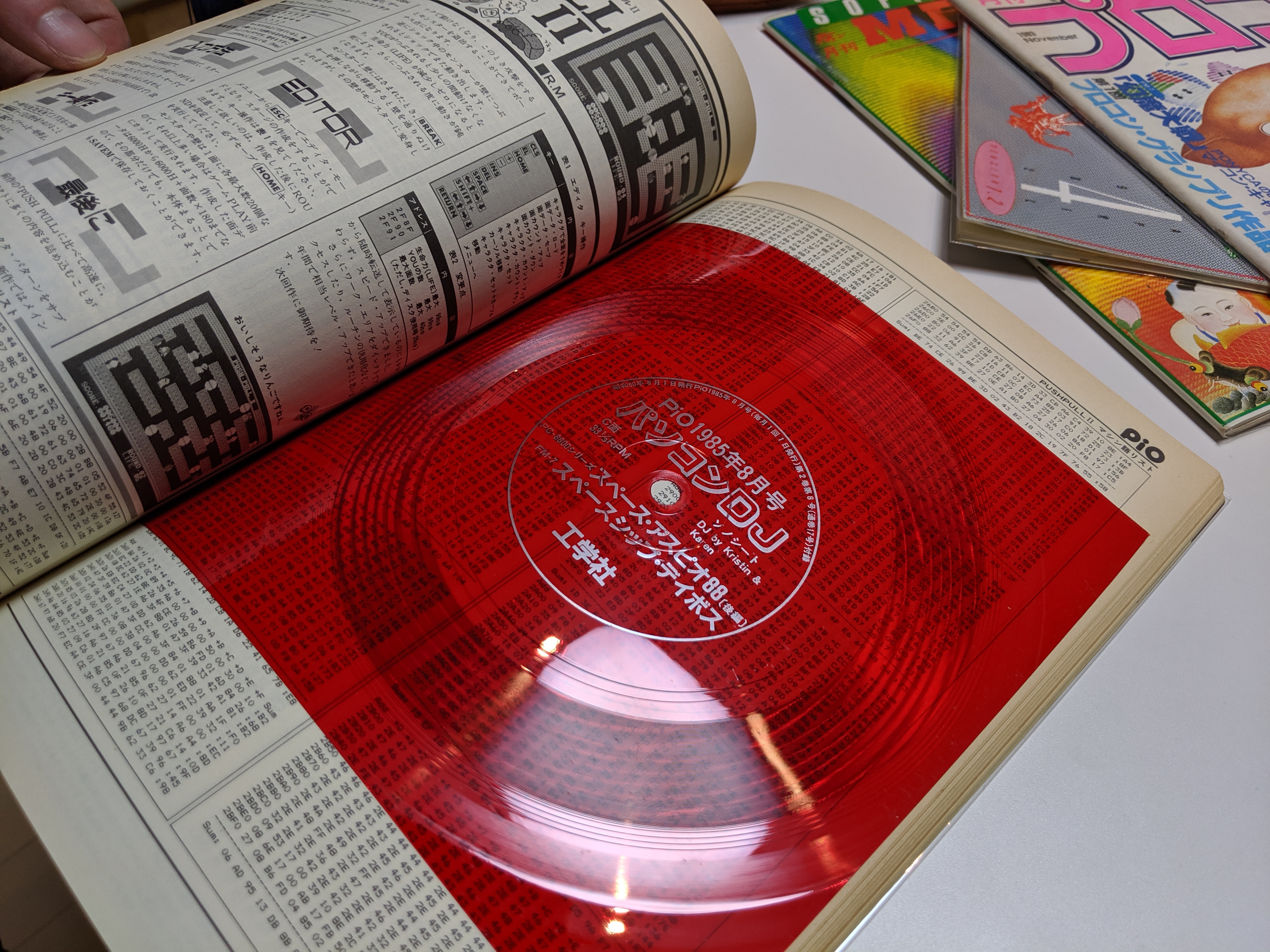
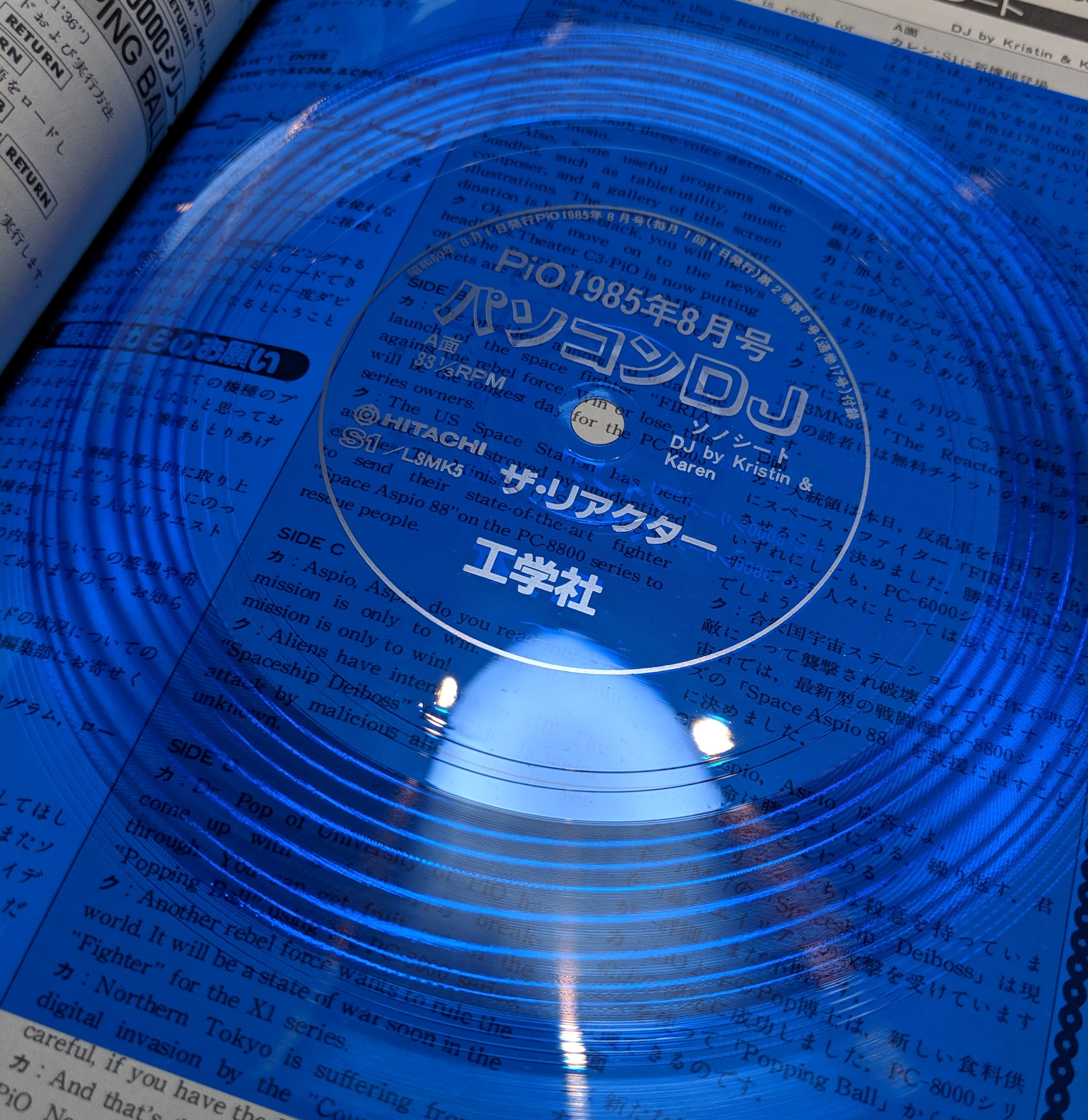
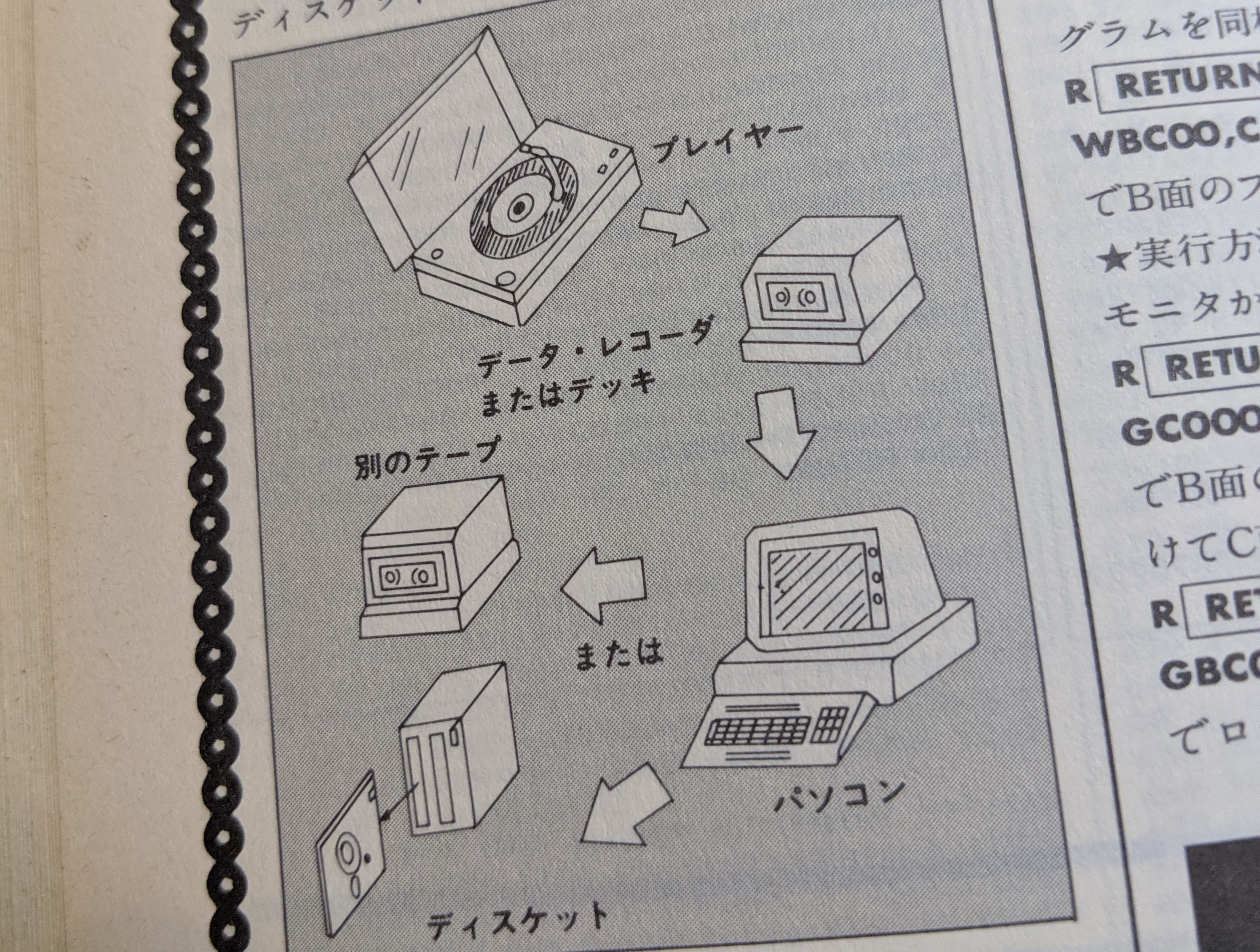
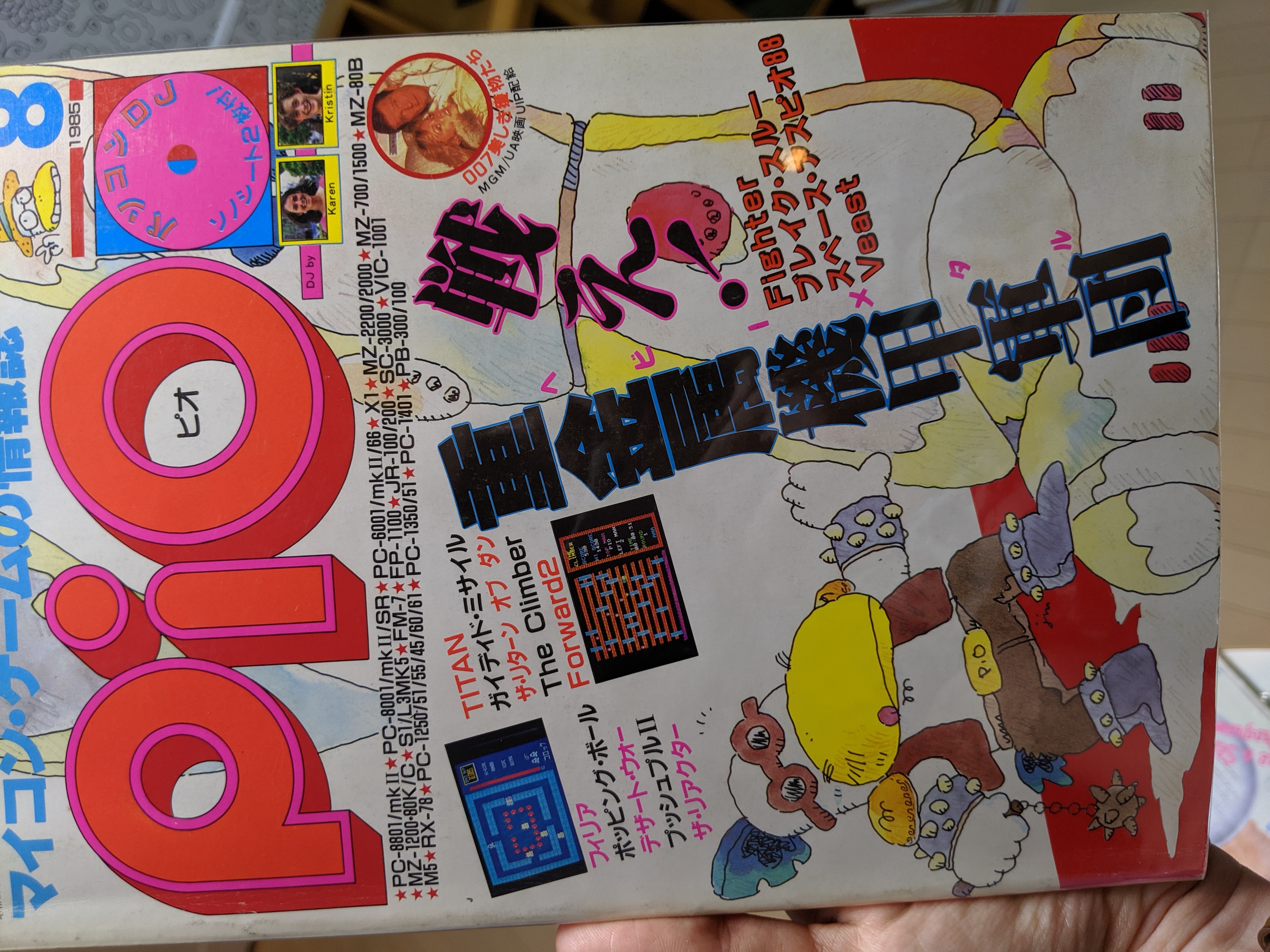
"You have to record the Sonosheet to a cassette tape and then play it in your computer," Redon said. "Because you could spend days writing the program, making sure it works, etc. If you're successful at recording the sound of it, just a few minutes, and you can play several games." This idea wasn't exclusive to Japanese magazines: PC mags in the West like Interface Age used them as well, but I'd never heard of them until PIO.
The insert is so thin it easily fits between the pages of a magazine, unlike a floppy disk, which would've required added cost. "I forget the law, but you had to pay a lot more to ship a magazine [with a disk]" in Japan, Redon said. "It was too expensive. So they had the idea of this."
As a preservationist, the Sonosheet presents Redon with a real challenge. "It's crap," he says bluntly. You can read it just one time, and it's dead. So this is not something I can do lightly. I made some tests, and we were not completely successful at reading the quality I was expecting. And it's not only programs. There is a D.J. talking about the game, making jokes."
The programs, at least, are duplicated in print in the magazine, so they can't be lost, but it's possible the other material on the Sonosheets is at risk of disappearing, as few pristine, unplayed ones are still available.
Surprisingly, the flexi-disc has made a bit of a comeback in recent years as a way to send out music singles and collectibles to fans. Maybe we'll be able to get one in an issue of PC Gamer, someday.

Wes has been covering games and hardware for more than 10 years, first at tech sites like The Wirecutter and Tested before joining the PC Gamer team in 2014. Wes plays a little bit of everything, but he'll always jump at the chance to cover emulation and Japanese games.
When he's not obsessively optimizing and re-optimizing a tangle of conveyor belts in Satisfactory (it's really becoming a problem), he's probably playing a 20-year-old Final Fantasy or some opaque ASCII roguelike. With a focus on writing and editing features, he seeks out personal stories and in-depth histories from the corners of PC gaming and its niche communities. 50% pizza by volume (deep dish, to be specific).

